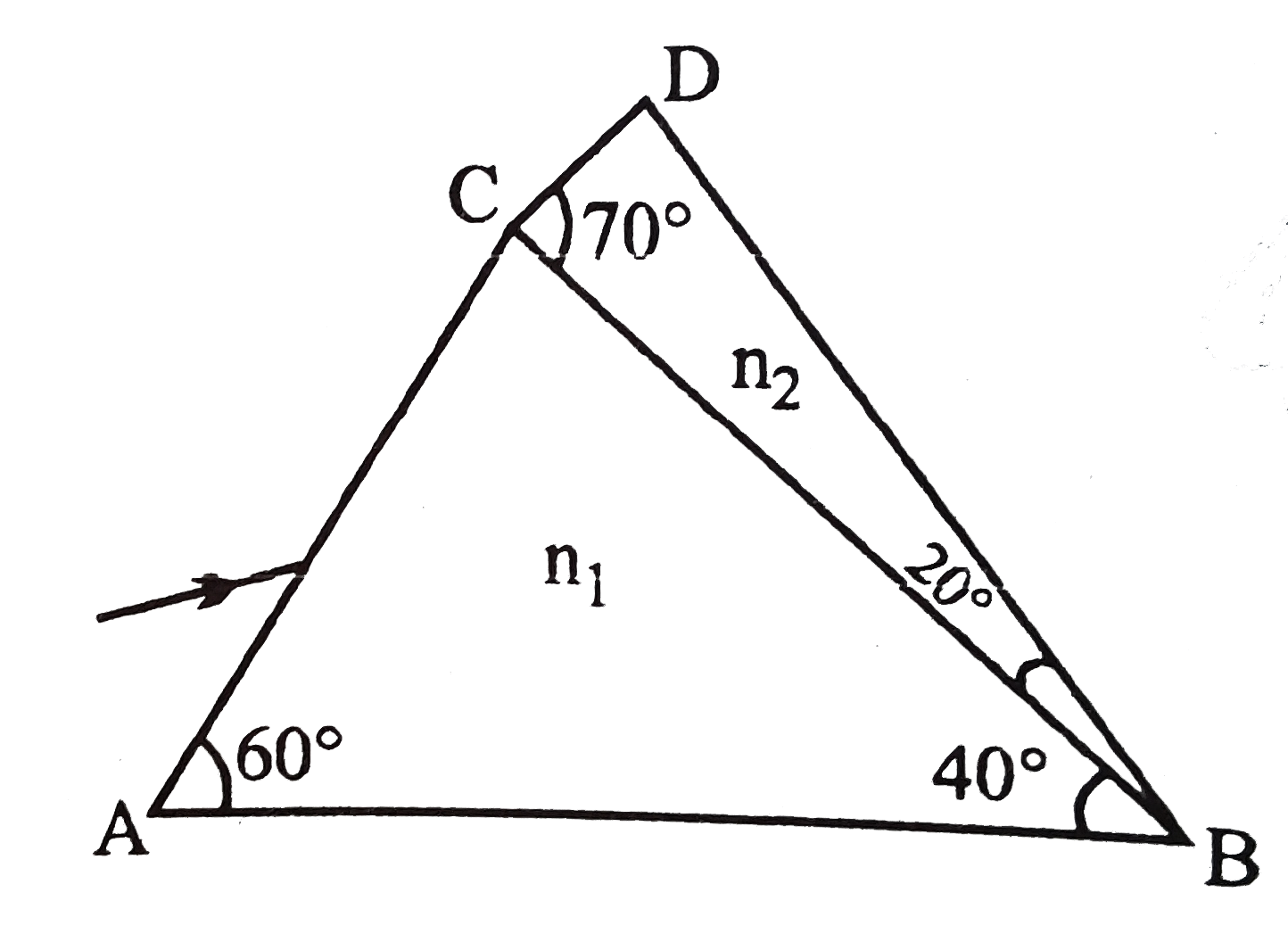One projectile after deviating from its path starts moving round the earth in a circular path of radius equal to nine times the radius of earth R. Its time period isSolution in Gujrati
2π√Rg
27×2π√Rg
π√Rg
0.8×3π√Rg
The correct Answer is:B
Step by step video & image solution for One projectile after deviating from its path starts moving round the earth in a circular path of radius equal to nine times the radius of earth R. Its time period is by Physics experts to help you in doubts & scoring excellent marks in Class 12 exams.
Updated on:21/07/2023Topper's Solved these Questions
- GRAVITATIONBOOK - ALLEN CHAPTER - GRAVITATIONEXERCISE - EXERCISE 2
26 Videos
- GRAVITATIONBOOK - ALLEN CHAPTER - GRAVITATIONEXERCISE - EXERCISE 3
11 Videos
- GRAVITATIONBOOK - ALLEN CHAPTER - GRAVITATIONEXERCISE - BOX-4
14 Videos
- GEOMETRICAL OPTICSBOOK - ALLEN CHAPTER - GEOMETRICAL OPTICSEXERCISE - subjective
14 Videos
- KINEMATICS-2DBOOK - ALLEN CHAPTER - KINEMATICS-2DEXERCISE - Exercise (O-2)
47 Videos
Similar Questions
Two satellites of earth S1 and S2 are moving in the same orbit. The mass of S1 is four times the mass of S2. Which one of the following statements is true?
View SolutionThe change in the value of acceleration of earth toward sun, when the moon coomes from the position of solar eclipse to the position on the other side of earth in line with sun is :
(mass of moon =7.36×1022 kg, orbital radius of moon =3.8×108 m.)
View SolutionThe mean radius of the earth's orbit round the sun is 1.5×1011 . The mean radius of the orbit of mercury round the sun is 6×1010m. The mercury will rotate around the sun in
View SolutionA prism of refractive index n1 & another prism of reactive index n2 are stuck together without a gap as shown in the figure.The angle of the prisms are as shown. n1&n2depend onλ,the wavelength of light according to n1=1.20+10.8×104λ2&n2=1.45+1.80×104λ2 where λ is in nm.

(i)Calculate the wavelength λ0for which rays incident at any angle on the interfaceBCpass through without bending at that interface.
(ii) for light of wavelength λ0,find the angle of incidencei on faceACsuch that the deviation produced by the combination of prism is minimum.
View SolutionA particle is moving in xy-plane .At certain instant the components of its velocity and acceleration are as follows ux=3m/s,uy=4m/s,ax=2m/s2anday=1m/s2. The rate of change of speed at this moment is
View SolutionA satellite moving in a circular path of radius r around earth has a time period T. If its radius slightly increases by 4%, then percentage change in its time period is
View SolutionOne projectile after deviating from itspath starts movnig round the earth in a circular path of radius equal to nine times the radius of earth R.
View SolutionA satellite is moving on a circular path of radius r around earth has a time period T. if its radius slightly increases by Deltar , determine the change in its time period.
View Solutionपृथ्वी से छोड़े गए एक प्रक्षेप्य का पथ वृत्ताकार होता है|
View Solutionपृथ्वी तल से भेजा गया एक प्रक्षेप्य पर्वलयकार (Parabolic ) पथ में गति करता है। अपने पथ के उच्चतम बिंदु पर प्रक्षेप्य की चाल न्यूनतम होगी।
View SolutionA satellite X moves round the earth in a circular orbit of radius R . If another satellite Y of the same mass moves round the earth in a circular orbit of radius 4R , then the speed of X is ____________ times that of Y .
View Solutionएक प्रक्षेप्य अपने पथ से विचलित होकर, पृथ्वी के चरों ओर 9R त्रिज्या की वृत्तीय कक्षा में परिक्रमण करने लगता है। [जहाँ R = पृथ्वी की त्रिज्या] तो उसका परिक्रमण काल कितना होगा ?
View Solutionएक कण नियत चाल v से r त्रिज्या के वृत्ताकार मार्ग पर गति करता है तथा एक चक्कर T समय में पूर्ण करता है। कण का त्वरण है
View Solutionयदि पृथ्वी सूर्य के चारों ओर वर्तमान त्रिज्या की दुगुनी त्रिज्या के वृत्ताकार पथ पर चक्कर लगाती है तो पृथ्वी का आवर्तकाल (वर्ष में) ज्ञात कीजिये।
View SolutionA particles moves with a uniform speed v and time period T in a circular path of radius r. If the speed of the particle is doubled, its new time periods is
View SolutionThe earth moves round the sun in a near circular orbit of radius 1.5×1011m. Its centripetal acceleration is
View Solution
